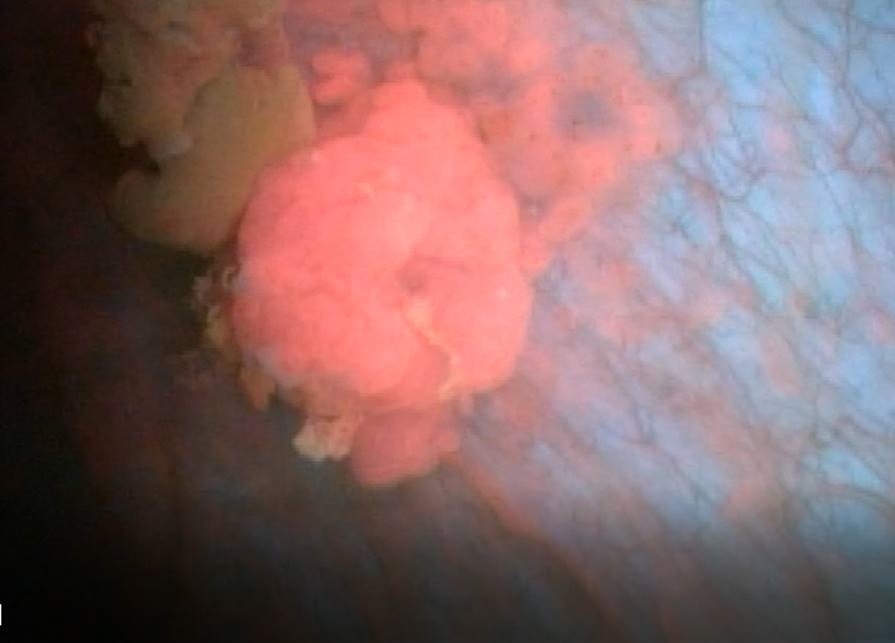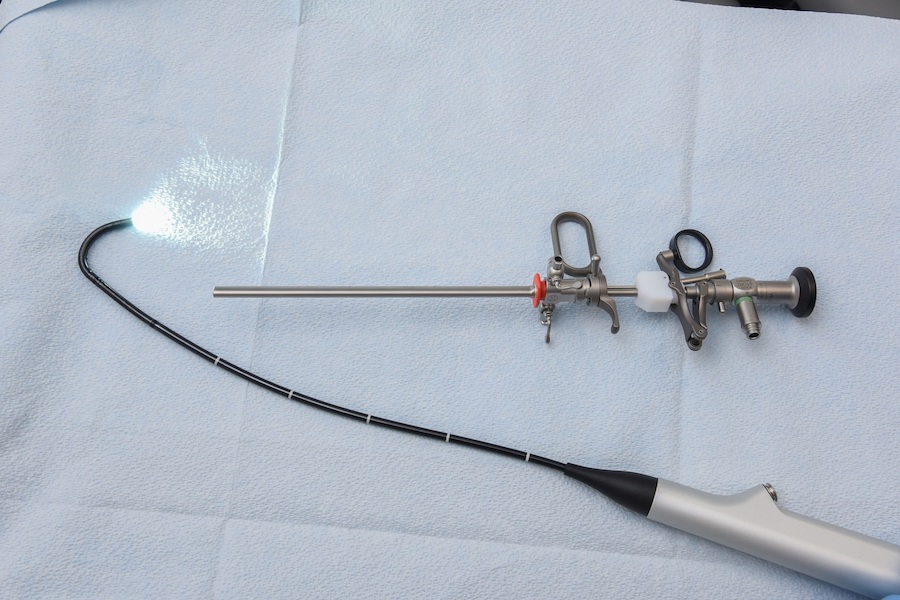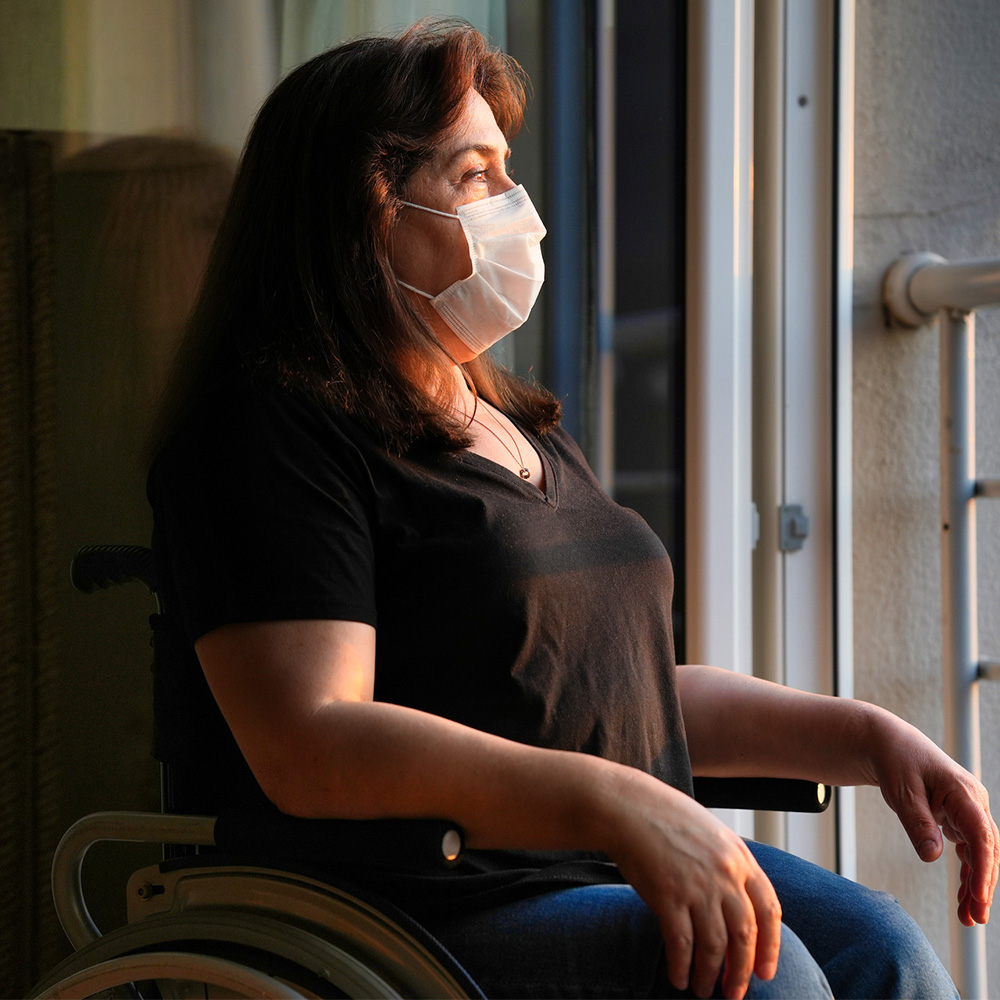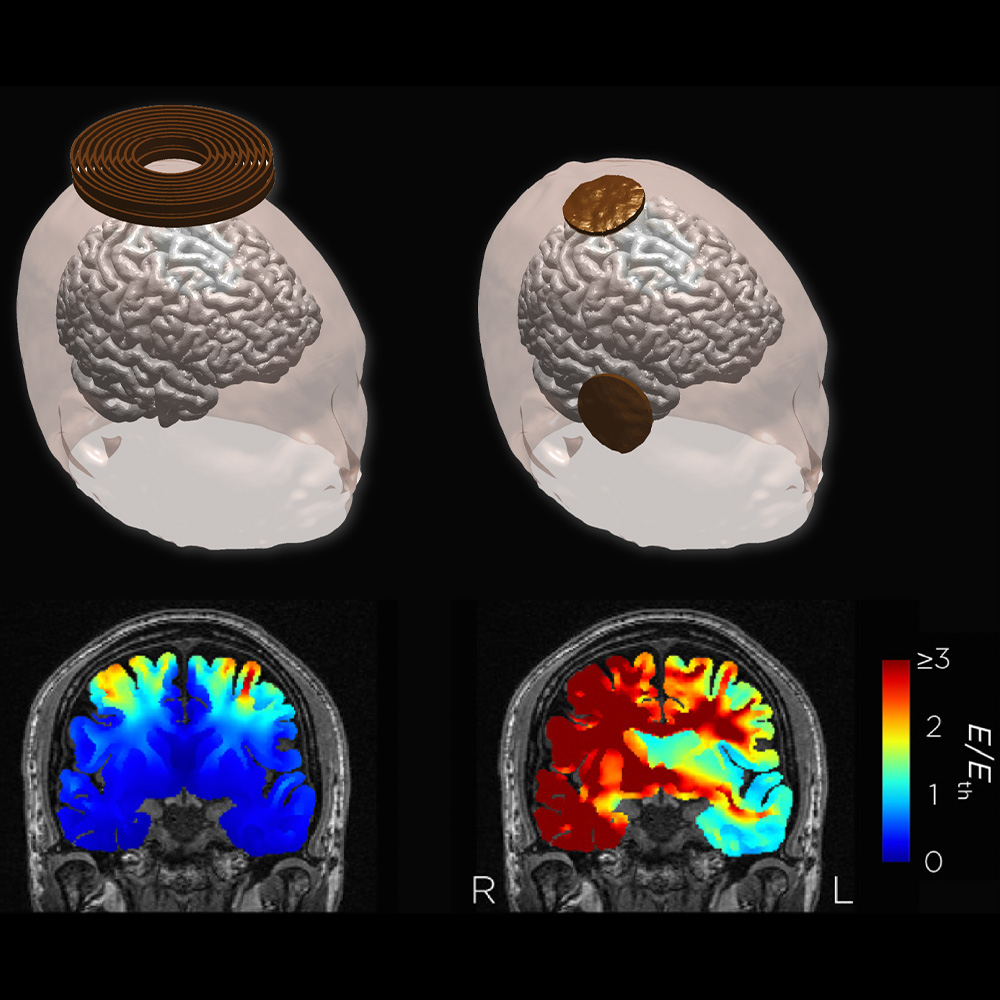Blue-light technology improves identification of bladder cancer
DALLAS – August 07, 2018 – From day one, Robert McMichael has been determined to live the best life he can. Born with muscular dystrophy, he refused to let his physical challenges block his path to achievement and completed medical school and a demanding residency in neurology.
When the Mansfield physician was diagnosed with bladder cancer about a year ago, he brought the same fighting attitude to this new challenge. He wanted the best treatment possible and that, he learned by reading everything he could about bladder cancer, included exams conducted with an about-to-be-approved medical device called a blue-light flexible cystoscope.
Dr. McMichael told his doctors at UT Southwestern Medical Center that he wanted his quarterly bladder exams to be done with a blue-light scope, which is better at illuminating cancer than a traditional white-light scope. Fortunately for Dr. McMichael, researchers at UT Southwestern had been among those testing this new technology, so that when FDA cleared the device for use recently, UT Southwestern became one of just four institutions in the country to offer the blue-light scope for outpatient use. Dr. McMichael became patient No. 1.
“Blue light works better than white light because we instill a photosensitizing agent into the bladder that’s taken up by cancer cells and not by normal cells. Subsequently, when you shine a blue light on it, the cancer cells look pink and normal cells don’t, so there’s a big contrast,” said Dr. Yair Lotan, Professor of Urology and a member of the Harold C. Simmons Comprehensive Cancer Center.

“White light has some limitations, and we know that we can miss anywhere from 10 to 20 percent of cancers when we just look with white light. We’re especially likely to miss a type of cancer called carcinoma in situ, which represents about 10 percent of bladder cancers. It’s a flat, patchy lesion, so it’s harder to spot than other cancers, which project out,” said Dr. Lotan, who holds the Helen J. and Robert S. Strauss Professorship in Urology.
Bladder cancer is typically discovered when a patient finds blood in the urine, and most of the time it is found before it has invaded the muscle of the bladder. Standard treatment for early stage bladder cancer consists of surgically removing the cancer lesions and immunotherapy. Patients will then return at regular intervals for cystoscopy examinations of the inside of the bladder to determine if new cancer lesions have occurred. Dr. Lotan likened the periodic exams for bladder cancer to patients who have had a skin cancer removed and then revisit the dermatologist on a regular basis.
There are about 80,000 new cases of bladder cancer diagnosed each year in the U.S., making it the fifth most common cancer in the U.S., according to the National Institutes of Health. While bladder cancer is often diagnosed at an early stage, the cancer has a high rate of recurrence. “The risk of recurrence can be as high as 50 to 70 percent for patients with high-grade disease,” Dr. Lotan said.

Blue-light cystoscopy has previously been available at some institutions, including UT Southwestern, for use in the operating room, but it wasn’t available in a flexible scope until now. Examinations that are done in an outpatient setting must be done with a flexible scope because the rigid cystoscope used in the OR would be too uncomfortable for patients who were awake, Dr. Lotan explained.
“Once you have bladder cancer, you have to be under surveillance indefinitely,” said bladder cancer patient Dr. McMichael, who has a follow-up exam every three months. “I’m not kidding you – I asked Dr. Lotan, “Can I have blue-light cystoscopy?’ So when he called me back and said I could, I was happy. If there’s any cancer to be seen, the blue-light cystoscopy significantly improves the chances of seeing it.”
Dr. Lotan said UT Southwestern Medical Center is one of just a handful of institutions around the country and the first in Texas to offer blue-light flexible cystoscopy. “The blue-light technology has really advanced the field. We’re detecting cancer that does not look very different from the normal lining, but is really there and that we’ve been missing for a long time.”
UT Southwestern Medical is recognizing its 75th year in 2018. The Harold C. Simmons Comprehensive Cancer Center, one of 49 NCI-designated Comprehensive Cancer Centers in the U.S. and the only one in North Texas, is among just 30 U.S. cancer research centers to be designated by the NCI as a National Clinical Trials Network Lead Academic Participating Site.
Dr. Lotan was a consultant to Photocure, the company that makes the imaging agent used in blue light cystoscopy.
About UT Southwestern Medical Center
UT Southwestern, one of the premier academic medical centers in the nation, integrates pioneering biomedical research with exceptional clinical care and education. The institution’s faculty has received six Nobel Prizes, and includes 22 members of the National Academy of Sciences, 16 members of the National Academy of Medicine, and 15 Howard Hughes Medical Institute Investigators. The faculty of more than 2,700 is responsible for groundbreaking medical advances and is committed to translating science-driven research quickly to new clinical treatments. UT Southwestern physicians provide care in about 80 specialties to more than 100,000 hospitalized patients, 600,000 emergency room cases, and oversee approximately 2.2 million outpatient visits a year.




